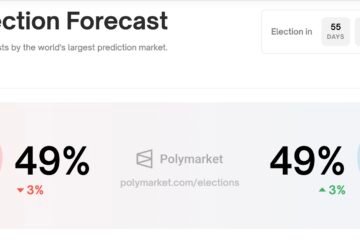After seeing the ad of people talking about Mahindra Scorpio on the road, I am noticing a lot more Mahindra cars on the road. This Mahindra Scorpio ICC Cricket World Cup ad is a clever use of Frequency Illusion, also known as Baader Meinhof phenomenon.
What is Baader Meinhof phenomenon?
The Baader Meinhof phenomenon, also known as the frequency illusion, is a cognitive bias where something you’ve recently learned about suddenly seems to appear with improbable frequency shortly thereafter. This can happen with new words, concepts, songs, products, or ideas. After you encounter the item the first time, it seems to pop up everywhere — in conversations, on the radio, in the books you’re reading, on TV, etc.
The phenomenon is named after the West German far-left militant group, the Baader Meinhof Group, also known as the Red Army Faction. However, the term’s connection to the group is somewhat accidental: an individual mentioned the group in a comment on the St. Paul Pioneer Press, and then started noticing references to Baader Meinhof everywhere, prompting the paper’s staff to coin the term.
There are two primary psychological processes that explain the Baader Meinhof phenomenon:
Selective Attention: Once you’ve encountered something new, your brain is unconsciously on the lookout for it, and suddenly you seem to encounter it everywhere. This is because you’ve made it more salient in your mind, even though its frequency has not actually increased.
Confirmation Bias: After noticing the item the first time, you subconsciously keep an eye out for it, and when you see it again, it reaffirms your belief that it’s everywhere now. You’re more likely to notice and remember the instances that support your perception that the phenomenon is occurring frequently, and ignore instances that don’t fit the pattern.
The Baader Meinhof phenomenon is a common experience and has implications for how we perceive the world and how information can be manipulated to seem more common or popular than it is. It’s a good example of how our perception of reality is not just a simple reflection of what’s out there in the world, but is also shaped by our mental processes.
How Marketers can use Baader-Meinhof phenomenon?
In marketing, the Baader Meinhof phenomenon can be leveraged intentionally or may occur naturally as a result of a campaign. Marketers do not necessarily create the Baader Meinhof phenomenon, but they certainly benefit from it.
Once consumers have been exposed to a product, their subconscious can do the rest of the work as they unconsciously notice the product more often, potentially leading to increased interest and, ultimately, a purchase.
Social Proof and Influencer Marketing:
- If a consumer sees a product being used by multiple influencers or celebrities within a short period, they may start noticing the product more in stores or online. The consumer’s heightened awareness may be mistaken for the product’s increased popularity or market saturation.
Retargeting Ads:
- Online retargeting campaigns serve ads to users who have visited a specific product page but did not make a purchase. After visiting the product page, the user starts seeing ads for the product everywhere they go online, which is a combination of actual increased exposure and the Baader Meinhof phenomenon.
Product Placement:
- By placing products in popular films, TV shows, or YouTube videos, marketers ensure that viewers who are exposed to the product in one context are more likely to notice it in real life, creating a sense of ubiquity.
Publicity Stunts and Viral Campaigns:
- When a marketing stunt or campaign goes viral, the public may see it across different media platforms rapidly. The sudden onslaught of exposure creates the illusion that the campaign is everywhere.
Word of Mouth:
- A product may become a topic of conversation among certain groups or within social media circles. As individuals hear about the product from different sources in a short span of time, their awareness and sensitivity to mentions of the product are heightened.
Repeated Advertisements:
- Marketers may choose to air a commercial frequently within a short time frame. This can lead viewers to believe that a product is more popular or widespread than it is.
New Product Releases:
- When a new product is released, especially by a well-known brand, there may be a surge in advertisements, reviews, unboxing videos, and social media mentions, which all contribute to a temporary spike in consumer awareness.
Branding and Logo Exposure:
- Consistent exposure to a brand’s logo or slogan across various mediums can create a heightened state of awareness about the brand, which can then cause consumers to notice the brand more frequently in unrelated contexts.
Examples of Baader Meinhof phenomenon in Marketing
This is not just a theory. Real-life marketing campaigns have frequently leveraged tactics that can trigger the Baader Meinhof phenomenon.
Social Proof and Influencer Marketing:
- Daniel Wellington Watches: The brand famously gifted watches to numerous influencers on Instagram, resulting in a flood of posts about their products. This made it seem like Daniel Wellington watches were omnipresent on social media, and many users reported experiencing the Baader Meinhof phenomenon as a result.
Retargeting Ads:
- Zappos: The online shoe and clothing retailer is known for its aggressive retargeting strategy. Customers who browse for products on Zappos will often find ads for those products following them around the web, reinforcing the frequency illusion.
Product Placement:
- Apple in Movies and TV Shows: Apple has placed its products in numerous films and television shows. Viewers who have just watched a movie featuring a MacBook might start noticing MacBooks more often in other media and in real life.
Publicity Stunts and Viral Campaigns:
- ALS Ice Bucket Challenge: While not a marketing campaign for a product, it exemplifies the phenomenon well. In 2014, the challenge went viral, and suddenly it seemed like videos of the challenge were all over social media, leading to heightened awareness of ALS.
Word of Mouth:
- Tesla’s No-Advertising Strategy: Tesla doesn’t spend on traditional advertising, relying instead on media coverage and word of mouth. After a new Tesla model is announced, discussions in the media and online can make it seem as though everyone is talking about Tesla.
Repeated Advertisements:
- GEICO’s “15 Minutes Could Save You 15% or More on Car Insurance”: GEICO’s frequent and repeated ads on TV, online, and on billboards can lead to the impression that GEICO is everywhere, even though the actual number of advertisements is consistent with other insurers.
New Product Releases:
- iPhone Launches: Apple’s strategy for new iPhone releases typically includes a well-orchestrated series of announcements, ads, and influencer reviews. This can make new iPhones seem ubiquitous soon after their release.
Branding and Logo Exposure:
- Nike’s Swoosh Logo: Nike’s consistent placement of its swoosh logo on athletes’ uniforms, merchandise, and advertisements across various media channels has made it one of the most recognized symbols in the world, often noticed by people even more frequently after they’ve recently been exposed to Nike advertising
Note: In case you are looking for a Product Management course, I would highly recommend joining this cohort-based course – ISB Executive Education – Product Management program
PS: You can connect with me for review or referral discount (link for referral discount)


